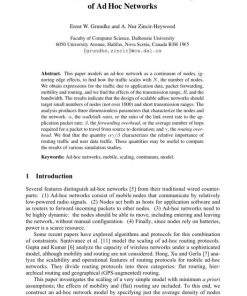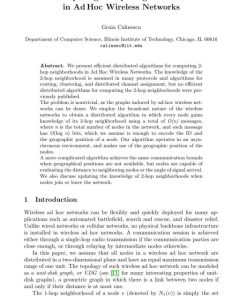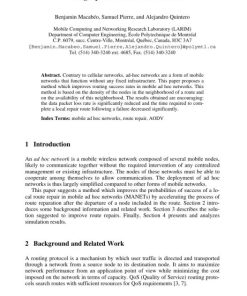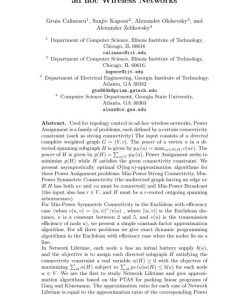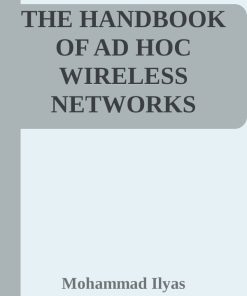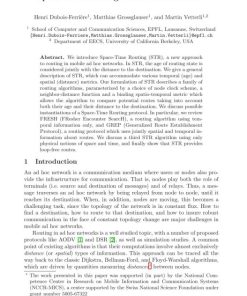Range Assignment for High Connectivity in Wireless Ad Hoc Networks 1st edition by Gruia Calinescu, Peng Jun Wan ISBN 3540202608 9783540202608
$50.00 Original price was: $50.00.$25.00Current price is: $25.00.
Authors:Gruia Calinescu; Peng-Jun Wan , Tags:Ad-Hoc; Mobile; and Wireless Networks , Author sort:Calinescu, Gruia & Wan, Peng-Jun , Languages:Languages:eng , Published:Published:Oct 2003
Range Assignment for High Connectivity in Wireless Ad Hoc Networks 1st edition by Gruia Calinescu, Peng-Jun Wan – Ebook PDF Instant Download/Delivery. 3540202608, 978-3540202608
Full download Range Assignment for High Connectivity in Wireless Ad Hoc Networks 1st Edition after payment
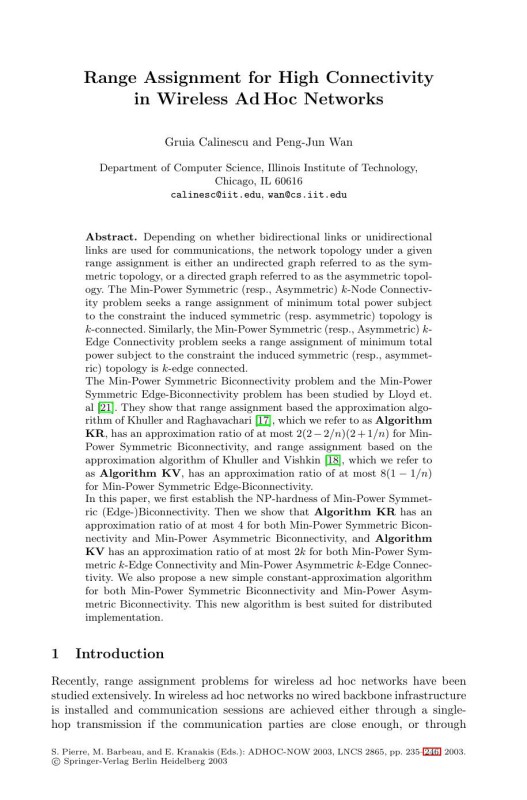
Product details:
ISBN 10: 3540202608
ISBN 13: 978-3540202608
Author: Gruia Calinescu, Peng-Jun
Depending on whether bidirectional links or unidirectional links are used for communications, the network topology under a given range assignment is either an undirected graph referred to as the symmetric topology, or a directed graph referred to as the asymmetric topology. The Min-Power Symmetric (resp., Asymmetric) k-Node Connectivity problem seeks a range assignment of minimum total power subject to the constraint the induced symmetric (resp. asymmetric) topology is k-connected. Similarly, the Min-Power Symmetric (resp., Asymmetric) k-Edge Connectivity problem seeks a range assignment of minimum total power subject to the constraint the induced symmetric (resp., asymmetric) topology is k-edge connected.
The Min-Power Symmetric Biconnectivity problem and the Min-Power Symmetric Edge-Biconnectivity problem has been studied by Lloyd et. al [21]. They show that range assignment based the approximation algorithm of Khuller and Raghavachari [17], which we refer to as Algorithm KR, has an approximation ratio of at most 2(2-2/n)(2+1/n) for Min-Power Symmetric Biconnectivity, and range assignment based on the approximation algorithm of Khuller and Vishkin [18], which we refer to as Algorithm KV, has an approximation ratio of at most 8(1-1/n) for Min-Power Symmetric Edge-Biconnectivity.
In this paper, we first establish the NP-hardness of Min-Power Symmetric (Edge-)Biconnectivity. Then we show that Algorithm KR has an approximation ratio of at most 4 for both Min-Power Symmetric Biconnectivity and Min-Power Asymmetric Biconnectivity, and Algorithm KV has an approximation ratio of at most 2k for both Min-Power Symmetric k-Edge Connectivity and Min-Power Asymmetric k-Edge Connectivity. We also propose a new simple constant-approximation algorithm for both Min-Power Symmetric Biconnectivity and Min-Power Asymmetric Biconnectivity. This new algorithm is best suited for distributed implementation.
Range Assignment for High Connectivity in Wireless Ad Hoc Networks 1st Table of contents:
-
Introduction
- 1.1 Background of Wireless Ad Hoc Networks
- 1.2 Importance of Range Assignment for Connectivity
- 1.3 Problem Statement and Research Focus
- 1.4 Objectives and Contributions of the Paper
- 1.5 Structure of the Paper
-
Background and Related Work
- 2.1 Overview of Wireless Ad Hoc Networks
- 2.2 Connectivity in Wireless Networks
- 2.3 Range Assignment Problem: Definitions and Challenges
- 2.4 Existing Techniques for Connectivity in Ad Hoc Networks
- 2.5 Related Work on Range Assignment and Network Connectivity
-
Problem Definition
- 3.1 Formalizing the Range Assignment Problem
- 3.2 Key Assumptions and Constraints
- 3.3 Maximizing Connectivity in Ad Hoc Networks
- 3.4 Factors Affecting Range Assignment (e.g., Power, Interference)
- 3.5 Motivation for the Proposed Approach
-
Mathematical Model and Framework
- 4.1 Graph Theory Model for Network Connectivity
- 4.2 Defining Connectivity Metrics and Constraints
- 4.3 Optimization Criteria for Range Assignment
- 4.4 Model for Power Control and Range Assignment
- 4.5 Trade-offs between Connectivity, Energy, and Cost
-
Range Assignment Algorithms
- 5.1 Overview of Range Assignment Algorithms
- 5.2 Greedy Algorithms for Range Assignment
- 5.3 Integer Programming Approach to Range Assignment
- 5.4 Distributed Algorithms for Range Control
- 5.5 Adaptive Range Assignment Based on Network Topology
- 5.6 Energy-Efficient Range Assignment Algorithms
- 5.7 Comparative Analysis of Algorithms
-
Performance Evaluation
- 6.1 Evaluation Metrics for Range Assignment
- 6.2 Simulation Setup and Test Scenarios
- 6.3 Impact of Range Assignment on Network Connectivity
- 6.4 Comparison with Other Connectivity Improvement Approaches
- 6.5 Scalability and Efficiency of Range Assignment Algorithms
- 6.6 Results and Performance Insights
-
Applications of Range Assignment in Ad Hoc Networks
- 7.1 Range Assignment in Mobile Ad Hoc Networks (MANETs)
- 7.2 Applications in Sensor Networks and IoT
- 7.3 Range Assignment in Vehicular Ad Hoc Networks (VANETs)
- 7.4 Multi-hop Communication and Relay Networks
- 7.5 Real-time Applications Requiring High Connectivity
-
Challenges and Future Directions
- 8.1 Handling Dynamic and Mobile Network Topologies
- 8.2 Interference and Collision Mitigation in Range Assignment
- 8.3 Scalability Issues in Large Networks
- 8.4 Integration with Advanced Wireless Technologies (e.g., 5G, SDN)
- 8.5 Future Directions in Range Assignment Algorithms
- 8.6 Hybrid Approaches for Optimal Connectivity
-
Conclusion
- 9.1 Summary of Key Contributions
- 9.2 Impact of Range Assignment on Network Performance
- 9.3 Final Remarks on Future of Range Assignment in Ad Hoc Networks
People also search for Range Assignment for High Connectivity in Wireless Ad Hoc Networks 1st:
high availability internet connection
range of connectivity
a high frequency transmission cable that delivers
dynamic range and sensitivity
very high frequency omni-directional range (vor)



